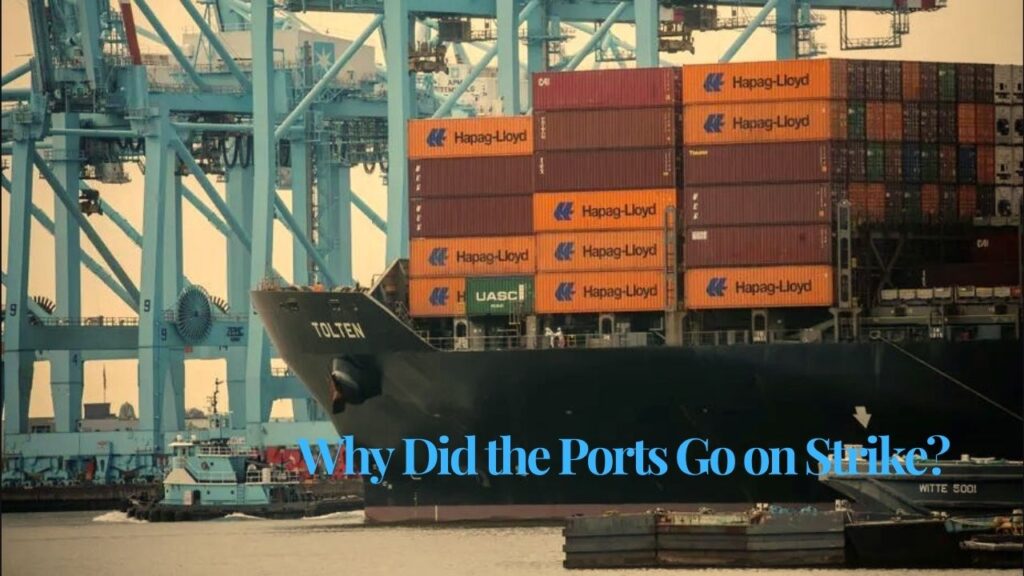Tens of thousands of dockworkers across the US have launched an indefinite strike, shutting down 14 major ports along the East and Gulf coasts and risking significant trade disruptions ahead of the holiday shopping season and US presidential election season. It marks the first such large-scale port strike in nearly five decades and could have significant economic ramifications.
In this blog, we’ll take a deeper dive into the key reasons and impacts behind port strike actions as well as provide answers to frequently asked questions regarding it.
Did the Port Strike Occur?
Yes, the port strike officially kicked off Tuesday when members of the International Longshoremen’s Association (ILA) began walking out, stopping container traffic between Maine and Texas and effectively disrupting significant portions of American trade.
The strike comes following months of failed negotiations between dockworkers and their employers, represented by the US Maritime Alliance (USMX). When their previous six-year contract expired without resolution in sight, dockworkers decided to take drastic measures in response.
Why Did Dockworkers Go on Strike?
Strikes were caused mainly by wage disputes, automation issues and overall terms of a new six-year master contract offered by USMX representing shipping firms, port associations and marine terminal operators – raising wages by 50% while increasing pension contributions threefold while strengthening healthcare options for their workers.
Harold Daggett of ILA Union demanded wage increases and opposed automation; fearing job loss. Unable to reach an agreement between sides, strike action was initiated.
Why Are East Coast Ports Going on Strike?
East Coast ports play an integral part in America’s supply chain and thus, this strike. Union members and employers could not reach an agreement regarding a new contract covering roughly 25,000 workers at these East Coast ports – where employers were offering wage increases while union representatives wanted increased compensation as well as protections against automation at these facilities.
This strike aims to address an ever-widening wage disparity, particularly as shipping companies saw profits surge during COVID-19 while dockworkers experienced inflation and stagnant wages.

What Is a Strike Port?
A strike port refers to any port where labour strikes have significantly disrupted operations – particularly dockworker strikes that halt loading and unloading ships, such as that currently occurring on both East and Gulf coasts. At present 14 major ports on both these coasts have been classified as strike ports due to this ongoing dockworker strike and 14 of them fall within this definition of strike port status.
With their strike now underway, these ports have suspended container traffic – disrupting everything from agricultural exports and imports of electronics, clothing and vehicles to agricultural produce exports and agricultural imports.
Which Items Will Be Affected by the Strike?
This strike will first impact time-sensitive imports such as food. Ports involved in this strike account for over 14% of US agricultural exports and over half of all national imports; some key products that could be affected include:
Bananas and Chocolate Tobacco and Nicotine Products.
Clothing and Footwear European Car Imports
If the strike continues, disruption could spread to more products affecting prices and availability during this crucial holiday shopping season.
What Will be the Economic Implications of a Port Strike?
Economists estimate that this strike could cost the US economy at least $4.5 billion every week and that at least 100,000 workers may suffer temporary job loss as its effects ripple throughout various industries. Disruption to “just-in-time” supply chains used by many businesses to reduce inventory costs could drive prices higher for consumers.
Oxford Economics predicts that US economic growth will be adversely impacted, potentially with long-term ramifications should the strike persist.
Could President Biden intervene in the Port Strike?
President Joe Biden could easily opt to suspend the strike for up to eighty days to allow further negotiations, yet instead directed both sides to engage in talks “good faith” for an equitable and swift resolution of this dispute.
Decision to forgo direct intervention could reverberate with election outcomes as economic consequences from strikes could influence public sentiment.
How Will the Port Strike Impact the United States Election?
The ongoing strike threatens to inject significant uncertainty into the US economy at an important juncture: just six weeks away from presidential elections 2024. An increase in unemployment or slower economic growth could damage President Biden’s chances for reelection while interference could alienate key labor allies.
However, the US Chamber of Commerce is pressing President Biden to act swiftly as it warns about possible economic fallout of an extended strike period.
Summary
The ongoing port strike led by ILA has the potential to severely disrupt US economic activity as we head closer towards holiday shopping season and presidential election day. No clear resolution in sight and its impacts expected to worsen with time as supply chains and consumer prices take their course.
This labor action highlights broader concerns around automation, wage inequality and worker rights – making it a central topic in US labor movements. Negotiations will continue and all eyes will be watching to see how Biden handles this delicate situation.
Related Article:
Pm Modi Speaks to Israel’s Benjamin Netanyahu on Middle East Crisis








